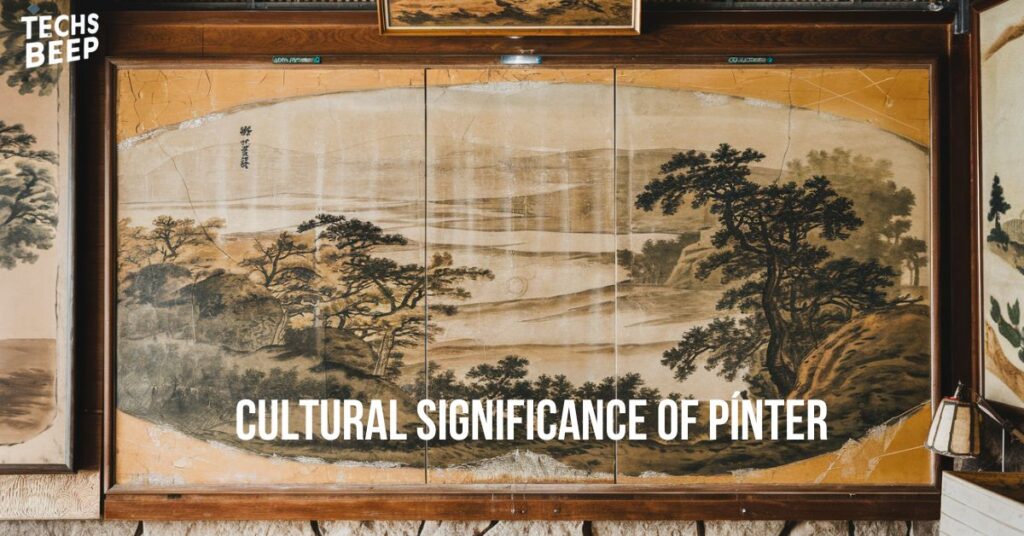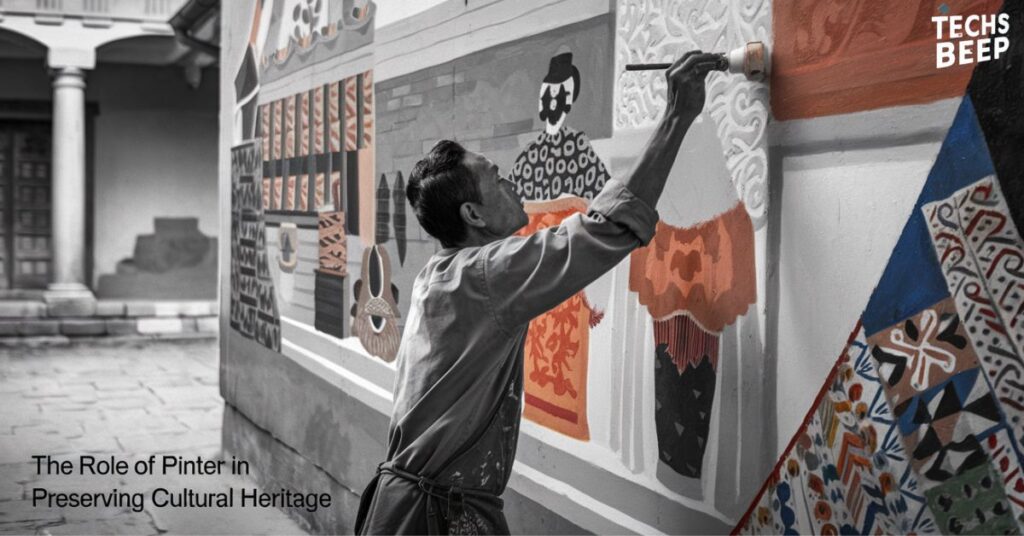Pínter, a term with deep historical roots, originally referred to skilled craftsmen in specific trades, particularly woodworking and barrel-making. Over time, it has evolved to embody a broader concept of expertise, dedication, and meticulous attention to detail across various fields.
In our fast-paced, mass-produced world, the resurgence of interest in pínter represents a fascinating counterpoint to modern trends. It speaks to a collective yearning for authenticity, quality, and a tangible connection to our cultural heritage.
This article delves into the multifaceted nature of pínter, exploring its historical context, cultural importance, and contemporary relevance. Join us as we unravel the threads that connect this time-honored concept to our rapidly changing world.
The Historical Origins of Pínter
The term pínter traces its roots back to medieval Europe, where it originally described skilled artisans working primarily with wood. These craftsmen were renowned for their expertise in barrel-making, a crucial trade in an era when barrels were essential for storing and transporting goods.
As societies evolved, so did the meaning of this term. By the 16th century, the term had expanded to encompass various skilled trades, including carpentry, joinery, and even metalwork.
The role of pínters in society was pivotal, as their craftsmanship directly impacted daily life. From crafting furniture to building ships, they were the backbone of pre-industrial economies.
“The pínter’s craft was not merely a job, but a way of life, passed down through generations.” – Dr. Emma Thompson, Historian
This generational knowledge transfer became a hallmark of the this tradition. Apprenticeships were common, with young aspirants learning the intricacies of the trade from master craftsmen.
The Industrial Revolution marked a turning point for pínters. As mass production techniques emerged, the demand for handcrafted goods declined significantly.
However, its spirit persevered, adapting to new technologies while maintaining a steadfast commitment to quality and craftsmanship.
Cultural Significance of Pínter

The cultural significance of pínter extends far beyond its literal meaning. It has become a symbol of dedication, skill, and cultural heritage in many societies.
In numerous cultures, this term is used with reverence, denoting someone who has achieved mastery in their field. This usage reflects a deep-seated respect for expertise and craftsmanship.
Literature and art often feature pínters as central characters, symbolizing the struggle between tradition and modernity. These portrayals highlight the cultural value placed on preserving traditional skills.
The pínter ethos has influenced various cultural movements, including:
- The Arts and Crafts movement
- The Slow Food movement
- The Modern Maker movement
Each of these movements embodies aspects of the its philosophy, emphasizing quality, sustainability, and a return to traditional techniques.
In some regions, annual festivals celebrate the pínter tradition, showcasing traditional crafts and encouraging younger generations to engage with their cultural heritage.
Its concept has also shaped language, with many idioms and expressions referencing the skill and precision associated with the term.
Modern Interpretations of Pínter
In contemporary society, the term has taken on new dimensions. It’s no longer confined to traditional crafts but extends to various fields of expertise.
Today, you might hear someone referred to as a pínter in fields as diverse as:
| Field | Example |
| Technology | A software developer known for elegant, efficient code |
| Culinary Arts | A chef who creates innovative dishes using traditional techniques |
| Design | A graphic designer who blends digital tools with hand-drawn elements |
| Education | A teacher who employs creative, hands-on learning methods |
This modern interpretation of pínter emphasizes the quality and innovation brought to any field of work.
The rise of the gig economy and freelance work has also contributed to a resurgence of the pínter ethos. Many professionals now approach their work with the same dedication and pride as traditional craftsmen.
Social media platforms have provided a new avenue for modern pínters to showcase their work and connect with like-minded individuals globally.
The concept of “personal branding” in the professional world often aligns closely with its philosophy of standing out through quality and craftsmanship.
In the tech world, the term “10x developer” – referring to exceptionally productive programmers – echoes the pínter concept of mastery and efficiency.
The Role of Pínter in Preserving Cultural Heritage

The pínter tradition plays a crucial role in preserving cultural heritage. It serves as a living link to historical practices and values that might otherwise be lost in our rapidly changing world.
Many countries have recognized the importance of its traditions and have implemented programs to support and promote them. These initiatives aim to ensure that traditional skills are passed down to future generations.
Case Study: Japan’s Living National Treasures
Japan’s program of recognizing master craftsmen as “Living National Treasures” is a prime example of preserving the traditions. These individuals are acknowledged for their exceptional skills in traditional crafts and are supported in passing their knowledge to future generations.
UNESCO has included several pínter-related practices in its List of Intangible Cultural Heritage, recognizing their global significance. This international recognition helps to raise awareness and promote the preservation of these skills.
Educational institutions are increasingly offering courses and programs focused on traditional crafts, helping to keep its traditions alive. These programs often blend traditional techniques with modern technologies.
The preservation of its traditions also contributes to sustainable development goals. Traditional crafts often use local, renewable resources and promote sustainable production methods.
Many skills related to this term are finding new applications in modern contexts, demonstrating their ongoing relevance and adaptability. For example, traditional woodworking techniques are being applied in high-end furniture design.
Read this article: Exploring the World of Venus Lusk: A Deep Dive
Pínter in Global Context
While the concept of this term has specific cultural roots, similar ideas exist in cultures worldwide. This global resonance speaks to the universal value placed on craftsmanship and expertise.
Let’s breakdown some examples of pínter-like concepts from different cultures:
- Japan: Shokunin (craftsman)
- Germany: Meister (master craftsman)
- India: Kaarigar (skilled artisan)
- France: Artisan (craftsperson)
The global appreciation for pínter-like qualities has led to international collaborations and exchanges, fostering cross-cultural understanding and innovation.
In the business world, companies are increasingly emphasizing “artisanal” and “handcrafted” products, tapping into the global appeal of pínter-like qualities.
The rise of global platforms like Etsy has provided pínters worldwide with access to international markets, helping preserve and promote traditional crafts.
International design and fashion industries often draw inspiration from its traditions, creating fusion styles that blend cultural elements. This cross-pollination of ideas helps keep traditional crafts relevant in the modern world.
Its concept aligns with global movements promoting sustainability, ethical production, and cultural preservation. It offers a model for responsible consumption and production.
Final Words
The journey of this term from a specific trade to a universal concept of mastery and dedication is a testament to its enduring relevance. It reminds us of the value of craftsmanship and attention to detail in an increasingly automated and mass-produced world.
As we navigate the complexities of modern life, the pínter ethos offers a grounding force. It encourages us to approach our work and lives with intention, care, and a commitment to excellence, regardless of our chosen field.
Perhaps most importantly, the concept of its bridges past and future. It shows us how traditional values can adapt and thrive in contemporary contexts, enriching our cultural landscape and inspiring future generations.
Frequently Asked Questions
What does the term pínter mean?
It originally referred to skilled craftsmen but now broadly describes experts demonstrating exceptional skill and dedication in any field.
How has the meaning of pínter changed over time?
It has expanded from specific trades to encompass expertise and craftsmanship across various modern professions and skills.
Why is pínter culturally significant?
This term embodies cultural values of quality, tradition, and craftsmanship, linking historical practices to contemporary society.
How is pínter used in modern language?
In modern usage, it describes someone who excels in their field with exceptional skill and commitment to quality.
What efforts are being made to preserve the traditions associated with this term?
Preservation efforts include educational programs, cultural heritage listings, apprenticeships, and government support for traditional crafts.








